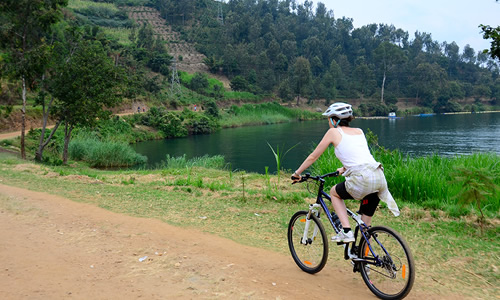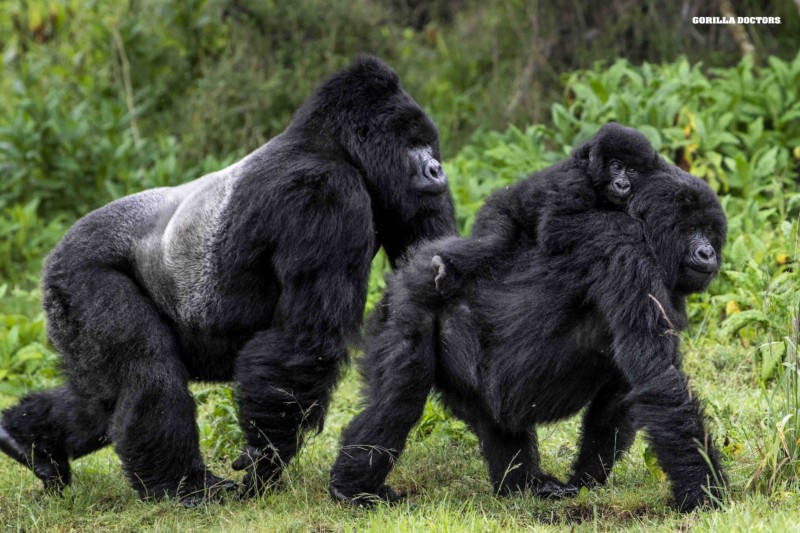The Bakiga tribe
The Bakiga tribe : The Kiga people, also known as the Abakiga (“people of the mountains”), are an ethnic Bantu tribe that lives in southern Uganda and northern Rwanda. The Rukiga language is spoken by the Kiga, who are also known as the Chiga or Kiga at times. The singular form of their language is Omukiga. Additionally, at the period of European invasion, a sizable Bakiga population still resided in Rwanda. Part of the border between British and German territories—originally established by the Treaty of 1890 as the parallel of one degree south latitude—was changed by an Anglo-German Agreement signed in Brussels on May 14, 1910. The areas that make up the current Rwanda-Uganda border, which runs between the Congo tripoint and the Kakitumba and Kagera junction, and the western portion of the current Tanzania-Uganda boundary, which runs between the Kagera and the second crossing of the parallel of one degree south latitude, were altered. An Anglo-German Protocol signed at Kamwezi on October 30, 1911, provides details of the definitive delimitation and delineation of the Rwanda–Uganda boundary between the southwest branch (Lubirizi) of the Tshinzinga (Muvogero) and the Congo tripoint of Sabinio. As a result, many Bakiga people de facto became Ugandans in 1911 at the official establishment of Uganda’s present international bordersWhereabouts.

Kabale and a portion of Rukungiri districts are home to the Bakiga. They live in parts of Kinkizi and Rubando counties in Rukungiri districts, as well as the counties of Ndorwa, Rubanda, and Rukigain Kabale. The Bakiga have been dispersing around Uganda as a result of overcrowding, particularly to the districts of Kabarole, Rukungiri, Kasese, Hoima, Masindi, and Mubende; as well as to the counties of Rwampara, Ruhuma, and Ibanda in the Mbarara region. They have made Masaka and Rakai districts their home as well. They are individuals with strong bodies. They converse in the Bantu language Rukiga.
Where the bakiga Originate
Different traditions conceal the Bakiga’s true origins. Some claim that during the Luo Invasion, the Bakiga moved from Bunyoro to Karagwe, where they first settled. They have ties to Tanzania’s Banyambo people. An other tradition that is more rational states that the Bakiga originated in Buganza, Rwanda. Due to internal political strife, they left Buganza in search of fertile land and to avoid natural hazards.
The Bakiga people are believed to have left Rwanda and moved to Bwisa, Bugoyi, Rutchru, and lastly Kigezi in Zaire. Given that the Bakiga speak Bantu, this custom might be genuine. It’s also possible that the Bakiga were among the Bantu speakers who moved from the Congo through Bunyoro, Karagwe, Rwanda, and eastern Zaire before settling in Kigezi. The precise dates on which they arrived in each of the regions on the way to Kigezi are still unknown.
Social structure of the bakiga
There were several Bakiga clans, the largest of which was the Basiga clan. Every clan consisted of multiple lines, with Omukuru w’omuryango being the leader of each lineage. It was forbidden for a man to wed inside his tribe.
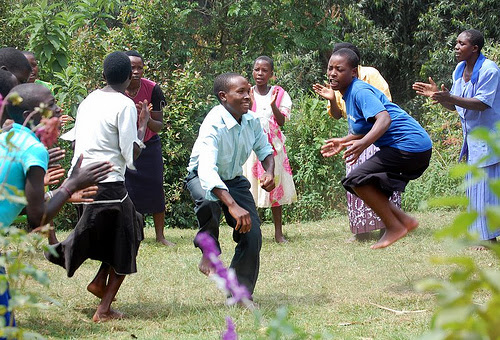
the legacy of the bakiga
The father’s estate could be divided among the sons who are male. When a daughter got married, it was customary for her father to give her some land as part of the assets (emihingizo) that would go with her to her new marriage. This used to serve as a valuable asset start-up (entandikwa) for the new family, especially in cases where the boys’ parents had very little wealth. In previous periods when the girl’s father either possessed an abundance of land or had fewer males.
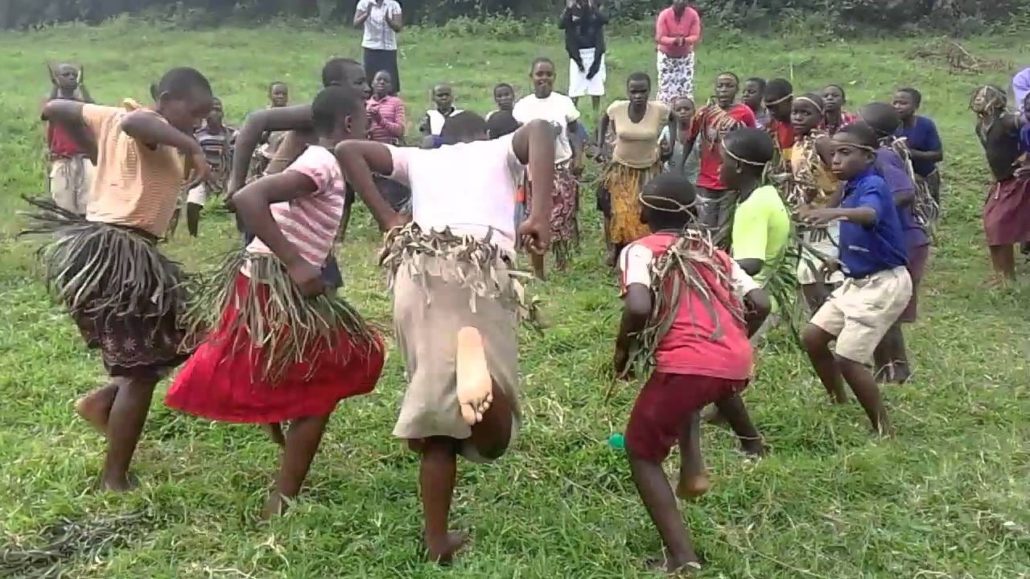
Households
A mukiga homestead was made up of several grannaries, a kitchen, a kraal, a main house or hut, and sanitary facilities. All of these were surrounded by a sturdy fence composed primarily of prickly bushes called emikwatangwe, which are plants that deter leopards. The purpose of the fence was to provide security from intruders, thieves, and wild animals that prey on cattle.
Bakiga Mariage
Among the Bakiga, marriage was a highly valued cultural institution. Traditionally, bride riches had to be paid in order for a marriage to be recognized. In the past, the boy’s father or uncle may have arranged a marriage on the boy’s behalf. Only when bride cash was paid could the last arrangements be made. Usually, the boy’s father compensated the bride. Goats, cows, and hoes were all involved. Within each group, the amount paid varied from family to family and from group to group. It is reported that selling any animals given as bridewealth was forbidden since the girls’ father or brothers would use the animals to find husbands.
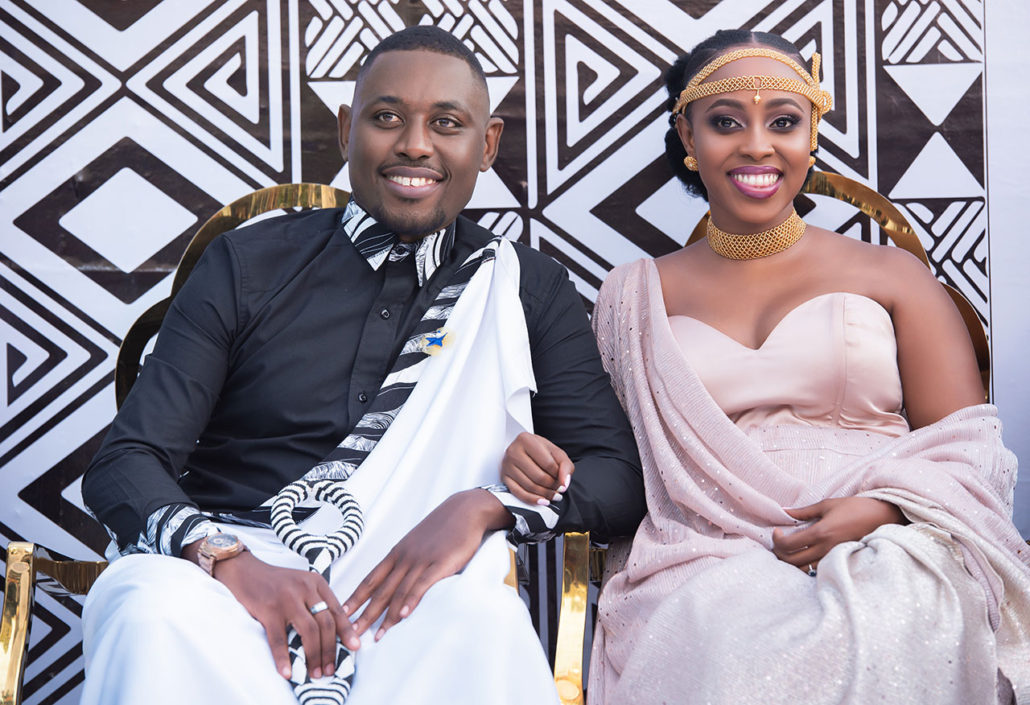
The Bakiga are a highly polygamous people; the only restrictions on the number of wives were those related to bride wealth duties and land availability.
The girl’s main family split the bride wealth that was paid for her. The two most significant family members were ishenkazi, the paternal aunt, and Nyinarimi, the maternal uncle. They claimed that if one of them left unhappy, he might provoke the wrath of the ancestors and make the girl infertile or ill all the time.
While ladies might get married between the ages of fourteen and sixteen, boys often married between the ages of eighteen and twenty. It was common for girls from wealthier families to marry later than those from poorer backgrounds. A female would spend about a month in isolation before to marriage. She would receive good nutrition and instruction in the art of housekeeping throughout this time.
Bakiga Divorce
The Bakiga experienced divorce on a regular basis. The common causes were infertility and either the husband’s or the wife’s lethargy. Divorce may also result from various miscommunications between a husband and wife. Remarrying after a divorce was permitted, but since she would no longer be a virgin, her new husband would be less wealthy. Most of the potential divorce cases were resolved by the elders. Normally, the woman’s father would call them to listen to the husband and wife, and attempt to mediate an agreeable resolution that would keep the marriage from ending in divorce. It was customary to fine the offending person in these situations. Although husbands and wives would frequently fight in the household, this did not usually result in divorce.
Faith
The Bakiga were devout followers of Ruhanga, also known as Kazooba Nyamuhanga, the Creator of heaven and earth. God is also recognized by a variety of characteristics. He is known as Mukama, the universe’s king and ultimate elder. In relation to the sun’s power, he is Kazooba-Nyamuhanga. He goes by the name Biheeko in his aspect as the one who brings forth growth.
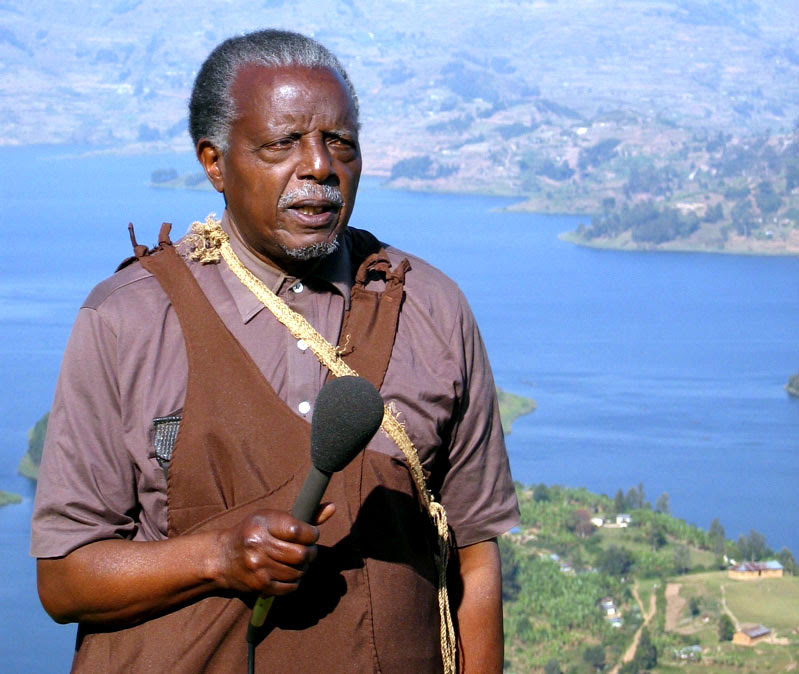
They had a lesser belief in the worship of Nyabingi, which is the spirit of a well-known rainmaker. Karagwe was claimed to be the birthplace of the Nyabingi cult. Its headquarters were close to Lake Bunyonyi in Kagarama. For Nyabingi, there were unique shrines called endaro. People would worship Nyamingi and offer offerings of beer and roasted meat through her delegates, the Abagirwa. The Nyabingi cult believed that their deity could win them battles and give them bravery and strength in the fight against colonialism; some thought Emandwa would protect them from evil spirits; still others believed other gods were responsible for luck, bountiful harvests, and other things.
Numerous Bakiga, influenced by Christianity, took on “theo-phoric” names. These names (Turya-guma-nawe) are eschatological, signifying that we shall spend eternity with God.
These days, the majority of Bakiga are Christians (the number of Muslims is small), and they are sharply split between Catholics and Protestants, a conflict that greatly polarizes communities. Religious beliefs have a significant impact on local political elections and can influence one’s professional chances.
The dressing of the Bakiga
In the past, wealthy men would dress in one or two cow hides. The skin covered the private areas and draped from the shoulder. A guy would belt himself when engaging in combat or dancing, but when clearing land, one would set it aside, labor without skin, and then put it back on when the task was over. In the past, women would wear tops and skirts composed of several skins. The torso was covered with a skin garment. Women’s special occasion clothing was created and embellished with beads and ringlets using small skin-piercing holes (Ebishato). Extra decorative adornments for the hands and legs would be worn by both wealthy men and women (“The Enyerere and Emiringa”).
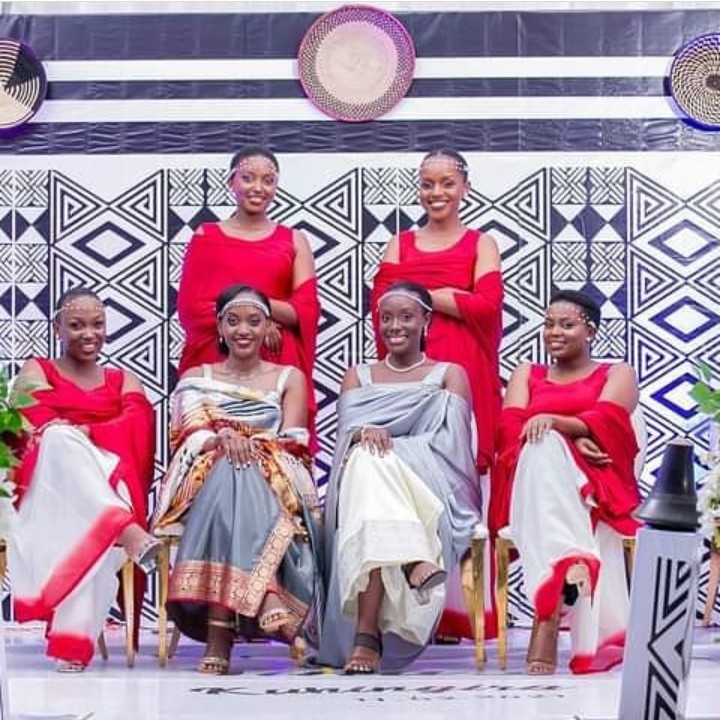
Getting ready for parenthood
Fathers and uncles would coach boys through the men’s routine. These included chopping firewood, hunting, herding cattle, removing shrubs to make way for crops, building homes, and other tasks. A woman’s virginity was crucial for future mothers. An unmarried girl would be brought to a forest, fastened to a tree, and abandoned to the whims of the animals if she became pregnant.
Alternatively, a cliff would be flung at her. Some of the locations selected for this were Kisizi Falls, Kashambya, and Hamuhonga along the Rwamucucu border. These sad girls were dumped on a specific island near Lake Bunyonyi. From here, some were saved to become second brides or to marry men who had few resources and were typically unable to pay dower. Bride riches was required to be paid before a marriage, which included cows, goats, and hoes. Polygamy was commonplace if a man possessed an abundance of land and enough of these women. (Turyahikayo-Rugyema,Edel). For example, Umwami Katamujuna, one of the surviving members of the Abungura royal clan, had ten wives, but he was forced to give up seven of them when Christianity arrived. It is estimated that a muhimba Rubango of Ibumba had thirteen wives.
Resolving conflicts
Elderly abakuru b’emiryango (Ngorogoza) clan members mediate conflicts. Clansmen chose a lineage head based on power (a rich man, a medicine man, or a priest) and character (truthful, brave, a battle leader). Chiefs of various lineages would meet and openly discuss any problems that could affect a larger community. When lineage leaders cannot work together to solve a problem, it may lead to intergroup conflict. The Bakiga were fighters by nature.
Medical Procedures
The Bakiga were known for their amazing methods of fostering wellness. While some were therapeutic, others were corrective and preventive. Sufficient nutrition and okushandaga (drug administration via skin incision) were the usual preventive measures. Good nutrition guaranteed health and vitality, but the purpose of Okushandaga was to provide protection against many ailments, including shielding a person from being struck by lightning or enchanted. Surgery was a widely used procedure that may be as simple as brain surgery for those whose sculls could break in an accident or during a conflict. In my hamlet of Ibumba, there were living examples of people who had undergone surgery and survived until they passed away from old age. Two women who had been speared and had their intestines ripped out when they were young. The doctors of the day arranged the intestines carefully, being careful not to strangle them, and squeezed the trimmed and sterilized (Okwotera) little calabashes back into their abdominal cavities. One of the women was the wife of Mpigika, the son of Nturanabo, the son of Mwate, the son of Mbumburi of Macumu, while the other was the mother of Rwakabuga, a musigyi from Nyakafura village and a church catechist. In order to treat a headache medically, a tiny, well-trimmed, sterilized gourd (engunga) was inserted into one of the facial blood arteries above the ear. The suction pressure from the vacuum produced by the heat-induced expulsion of air stuck the gourd in place. An excessive amount of bad blood would enter this channel and cause headaches. The majority of medicinal medications were made from herbs that were used to cure a variety of illnesses. Poisoning remedies were used sparingly and frequently (vomiting to get rid of the poison that was consumed). They even developed a remedy for severe vomiting brought on by these drugs. Millet bran could be used to incubate prematurely born babies until they were developed. Enyabarashana, also known as Bidens pilosae, is used to treat cuts in order to stop the bleeding. Preparations from the Stinging Nestle/Ekicuriganyi would be a helpful treatment for urinary complications, enzyme problems, and perhaps prostate cancer. Fractures and bruises were treated (okumunga) regardless of the patient’s presence, provided that the location of the fracture was identified. Love stories were common, especially in polygamous households where wives and other women were trying to get the husband’s personal attention. An analysis of the bakiga medical practice could provide a crucial basis for solutions pertaining to current, trustworthy basic medical care.
Dance and Music
The Bakiga dance style is known as the Ekizino. The Bakiga people of Kigezi, dubbed the “Switzerland of Africa” due to its climate and terrain resembling most of Europe, have a regal dance known as ekizino. Nighttime lows typically range from 4°C to 10°C. Traditionally, livestock are kept indoors to provide heat for the family, frequently beneath an elevated wooden pole bed.
Ekizino is the warm-up dance in the winter. The men who go farming early in the morning must hop around a bit to warm up and to stretch their muscles after labor because Kigezi is a mountainous area. Historically, until they discovered indications of water, the people would also stamp the earth. Consequently, this extremely spirited dance symbolizes their leaping and stamping and is intended to show off their strength and endurance. Women also take part in this intense dance, although they show off their arms in a more tasteful way.
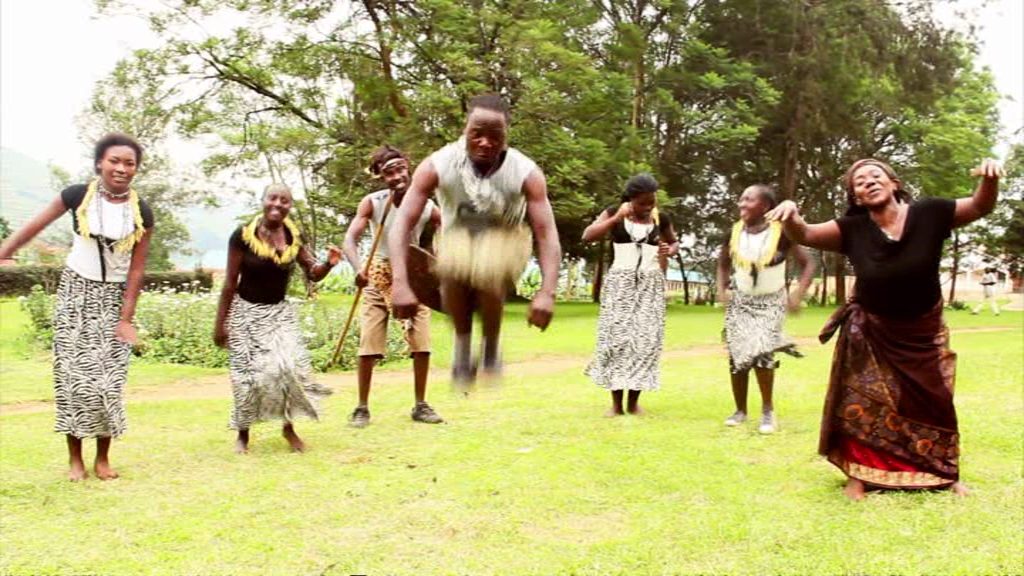
Finance
The Bakiga were mostly farmers who grew millet, beans, sorghum, and peas. In addition, they raised several goats, sheep, and cattle. They included skilled ironsmiths who crafted spears, knives, and hoes. They made a variety of pottery and were excellent porters. In addition, they raised bees and produced honey in addition to creating a variety of woodworking items, such as baskets and mats.
The Bakiga were a collective people. The majority of economic activity was conducted in groups. Collective labor was used for farming, harvesting, clearing brush, and grazing. While the women tiled the area, the guys cut down the undergrowth. Men labored together to construct circular shelters covered in grass thatched roofs. They engaged in barter commerce with their neighbors as well as with one another.
Bakiga’s staple diet consisted of sorghum, beans, and peas. In addition, they provided beef, yams, pumpkins, and a variety of green vegetables. Enough food was prepared so that each person could eat to their satisfaction. It was deemed impolite to participate in a lunch if one happened to spot a certain family. Simply washing one’s hands and joining the group would be done without waiting for an invitation. Every woman a guy married had to wait on him at every meal if he had multiple wives. He was free to eat all of the food, or only the portion he found the tastiest out of the group.
Omurabamba, the beer produced by the Bakiga, was important to society. Omuramba was an alcoholic beverage that was served with food and was essential for social events. It was often poured from a pot that was kept at a handy location. The men would discuss issues impacting their nation while sipping drinks from wooden seats arranged around it and extended tubes. In addition, the elders would resolve conflicts, recount their history and valiant exploits, and lead singing and dancing circles around a pot of omuramba.
The Bakiga are excellent zither (enanga) players, and they always have been. They played it in groups or by themselves.
Cutlery
Baskets, pots, wnnowingtrays, stools, grinding stones, wooden pestles, mortars, and mingling ladles were among the household items used by the Bakiga. Other household objects included harps and drums for amusement, spears, bows, and arrows for hunting and defense, and emishambi and grassmats (ebirago) for sitting and sleeping on. The Bakiga women used to dress in ebisahto, or cow hides, also known as enkanda. Their arms and legs were adorned with bracelets.
Political structure
Segmentation characterized the Bakiga civilization. Lineage leaders, or Abakuru b’emiryango, held political power; many of them were skilled soldiers as well as orators. When it came to dispensing justice, they were expected to be unbiased. Certain leaders, like Basubi, were well-known due to their magical abilities. They were the cause of the rain. The others were the Nyabingi cult’s mediums, Baigirwa.
The Bakiga had a military air. The Batutsi and Bahima raids were resisted by them. They were a politically divided society without a standing army. In the case of an invasion, their warlords would rally the populace and lead them to battle. The warlords were men who had fought and defeated hordes of opponents without losing a single soldier or piece of equipment. All physically fit men were expected by culture to serve in the military.
Court systems
The Bakiga detested antisocial behavior, and they severely punished anybody who engaged in it. These included path-blocking, murder, sorcery, thievery, and night dance. For instance, in a murder case, the murderer and the victim were buried together while still alive. Being a virgin was highly valued, and being pregnant before getting married was a serious offense. An unmarried girl would either be brought to a forest and bound to a tree by her feet, arms, or town over a precipice if she became pregnant. The majority of pregnant Bakiga girls were brought to Ndorwa’s Kisizi Falls and tossed over the edge. The falls would swallow them alive. The fortunate individuals were merely cursed and rejected by their community.
Background / Source
The time before colonization
Different traditions conceal the Bakiga’s true origins. According to one school of thinking, the Bakiga moved from Bunyoro to Karagwe during the Luo Invasion. They have ties to Tanzania’s Banyambo people.
The Bakiga people originated in Buganza, Rwanda, according to another tradition that appears to be supported by actual data. One of their traditional songs, “Abakiga twena tukaruga Rwanda, omu Byumba na Ruhenjere,” mentions this, implying that all of the Bakiga originated in Ruhenjere (known as Ruhengeri in Rwanda). The cities of Ruhengeri and Byumba are both in Rwanda. The Bakiga are thought to be the offspring of Kashyiga, who subsequently became known as Kakiga son of Mbogo and came from the little Rwandan kingdom of Bumbogo. His immigration led to the formation of the current Bakiga community in Kigyezi, also known as Kigezi. As a result of internal political strife, Bakiga left Buganza in pursuit of fertile territory and to avoid natural hazards.
The Bakiga people are believed to have left Rwanda and moved to Bwisa, Bugoyi, Rutchru, and lastly Kigezi in Zaire. Given that the Bakiga speak Bantu, this custom might be genuine. It’s also possible that the Bakiga were among the Bantu speakers who moved from the Congo through Bunyoro, Karagwe, Rwanda, and eastern Zaire before settling in Kigezi. The precise dates on which they arrived in each of the regions on the way to Kigezi are still unknown.
Rwanda is thought to have been occupied by the Twa people before 1700 A.D., the Hutu people during their second immigration, and the Tutsi people during their third immigration. Rwanda was divided into small states and chiefdoms, all ruled by a single Mwami. He was formerly known by the name Omukama. As a result, the Bakiga gave their ruler the name Mukama, which is comparable to Mwami in other regions of Rwanda.
Mukama was originally the title of a Ruler rather than a name. However, it was eventually acknowledged as a name, referring to a single reigning man. The name was then ascribed to God as Lord in the Bakiga culture. Mukama is not a female name among the Bakiga. The Bakiga people are not commonly referred to as Mukama. This name was set aside for usage only inside the Bamuhutu family, the royal bloodline with inheritable rights. Any one going by the name Mukama has to be a Bamuhutu, more especially a Mungura/Mwitira, or a member of the Bamuhutu royal clan. The word Mukama denoted a more basic power than the Tutsi who took over the Kingdom after Mbogo was vanquished, but not even in Rwanda did they dare to use it. Names like Byamukama, Kyomukama, Womukama, Kamukama, Bainomukama, and so forth could be considered similar. As a result, the title of King in Rwanda remained Mwami (Omwami), but the title of Mukama (Omukama) was still used in the Rukiga (the Kiga Kingdom).
Bakiga Kingdom
The Kiga Kingdom, its clans and sub-clans, and all of his children’s direct descendants were all created by Kakiga. Every clan was distinguished by a totem and by the foods they were not allowed to eat. For instance, it was forbidden for the Ba-Mungwe to hunt the bushbuck, which was their totem. Since the clans weren’t fighting over the same food, all of these precautions were taken for their safety, nourishment, and general well-being. Although the Kiga tribe is made up of numerous clans and sub-clans, the principal ones are Ba-Mungura, which is the Royal Clan in which the Mukama was supposed to be born; Ba-Musigi, which was supposed to maintain the King’s or the Mukama’s defense; and Ba-Mungwe, Ba-Kinyagiro, Ba-Mugiri, Ba-Muhutu, Ba-Mugera, Ba-Mugyesera, Ba-Mugyeyo. Subclans exist within each of these clans.
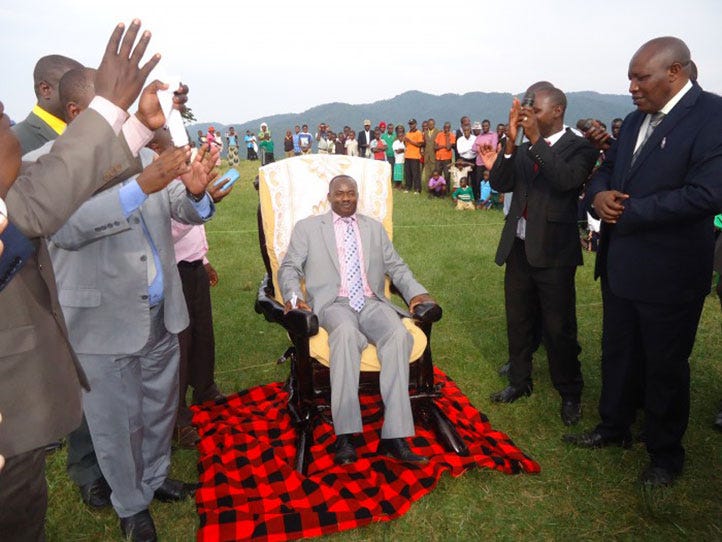
The tribe appointed the Abukuru b-ekika, a committee of elders, to impose laws and administer justice. A case would be heard in public if it affected multiple clans and was extremely serious. To preside over this larger court was chosen an Omukuru, preferably a knowledgeable elder who was familiar with the traditions and practices of his people and who could be relied upon to administer justice and fair advice.
Born into the Abahitira (Abungura) clan and the state of Bumbogo, Kakiga moved westward and settled in the forests of Kagarama, the mountains that form the current border between Rwanda and Uganda in the Kigezi district. He is the son of Mbogo. About 1700, Kakiga founded his own village and desired to found a new kingdom, but he first desired to return and battle the Nyoro invaders. Kakiga learned that the new property had good fodder for the cattle and was extremely fertile. He and his friends worked out a plan to stay. These gave rise to a brand-new ethnic group known as the Bakiga or Abakiga.
The population increased throughout time, and Kakiga desired to extend his areas. He began dispatching squads on a conquest mission. He dispatched the first group eastward into the Karweru regions that the Abasigi force was expected to subjugate. Rwandeme was in charge of this organization. This was thought to be the most formidable group facing the Ankorean soldiers. Rwandeme, regrettably, misplaced the Royal drum. Rwandeme never dared to go back to Kagarama since the Kingdom could not function without a drum. He stuck to the Karweru highlands, where his group had intermarriages with the Ankore people. This explains why certain areas of the region are home to the majority of the Abasigi. It also explains why the Rukiga language has so many distinct spellings, intonations, and accents.
Kakiga, furious with his father Mbogo, mandated that all male children be circumcised. Although this was not well received by many, he insisted that all Munguras and even kings have to undergo circumcision. For this reason, out of all the clans of the Kiga tribe, only the Abungura undergo circumcision. At age eleven (11) the circumcision was scheduled to take place. Due to cultural responsibility, the remaining Bakiga do not undergo circumcision. However, some people use it now days for different reasons than necessity. Kakiga also left the Kiga legacy of the system of naming. The Kiga people take the family name after their grand father, or after their father has died. That is why, it is very hard to trace the lineage of the Bakiga through family names. But among different clans, they still hold the norm of the founding father. For instance, Mbogo could be the son of Rwambogo. But in like a seventh generation, Mubangizi could be the son of Mubanga. All in all, the same names would be revolving around in the same family. But nowadays, many educated Bakiga find it useful to use their parent names, even if they are still alive. Even the Royal clan does it. This separation and rebellion will mark the complexity of the Kiga community, letting it look as though she never had a political system.
The major factors that led to the failure of the formation of the Kiga kingdom to the fullest were, mostly, a lack of trust and fear of Kakiga, the lack of a military strong enough for a successful invasion, the sudden prosper and discovery of fertile lands. Kakiga, though he lost the royal drum, he continued to be strong. He sent another group to attack further in the north. This was the group of the Abaromba and the Abahimba. These diffused to most parts of Muko, Rubanda, and Kihihi. Other groups went to Kakore and Mparo, and proceeded to Nyakishenyi and Nyarushanje. We still find a mixture of Ankore and Kinyarwanda accents and intonations in these areas. Kakiga attempted to make another drum, but he could not get testicles of brave enemies to decorate it. He only made declarations that his sons and daughters should not marry any foreigner, because he believed that the pure King should be from Rwanda.
He made his shield out of cattle skin. He promoted agriculture and his tools were mainly the panga, the spear, and the hoe. He enjoyed wrestling, dancing, hunting and keeping cattle. The most common figures of the few known Bungura Royals include: Muhanga (Mubanga), Rwabutare, Kamboji, Kabogo, Katumba, Katamujuna, Kahigyi, Bakunzi, Mbogo, Rwakasole, Mungura, Rwambogo. The Abungura, though few as they may be, are still the recognized Royal clan of the Kiga tribe and most of them live in outskirts of Kabale town, and still enjoy their hereditary wealth. They are not wealthy in the strict sense of the word. They are renowned for their love for research and education. The Bungura were also known for their tough leadership, and at times, they are referred to as arrogant, and aggressive.
There has been a variety of experiences in the life of the Bakiga, such as interactions with other Kingdoms, religions, and many other cultures. The bakiga are very hospitable and enjoy the privilege of having a mixed language. Rukiga, as a language, is a combination of the influence of the accents and alphabets from Rwanda, Ankore, Toro, Bufumbira, and Swahili.
While the Bakiga would later be classified as Hutu, originally they considered themselves an entirely separate people. In modern Rwanda, the Hutus of southern Rwanda are called Banyanduga, while the Hutus in the northern Rwanda are collectively referred to as Bakiga.
Colonial Period
The Bakiga communities defended their independence until the collaboration of German colonial forces and the royal troops of the Mwami or Mukama succeeded in incorporating the region into the Rwandan colonial state at the turn of the twentieth century. The region remained a hotbed of discontent against the central authority for many years. One of the strongest influences upon the character of the Bakiga was the anti-centrist cult of Nyabingi.
After the death of the Rwandan King, Kigeri IV Rwabugiri in 1895, one of his wives called Muhumuza fled to the mountains of Kiga and proclaimed an anti-colonial rebellion in 1911. She was captured the same year and her resistance taken up by Ndungutse, generally recognized as the son of Muhumuza and Rwabugiri. Ndungutse was killed, though sporadic rebellions sprang up until the advent of Belgian rule after World War I. The conditions for these rebellions were created by the system of forced labor tribute (ubareetwa) imposed on the Bakiga by their new colonial masters. P.T.W. Baxter noted that, “The proud boast of the Kiga is that they were never, as a people, subjugated by either Tutsi or Hima.” However, this resistance was, paradoxically, in large part led or inspired by disaffected members of the Tutsi elite.
The Bakiga became one of two major forces, along with the hill-level tensions of Hutu peasants and Tutsi chiefs, in the formation of “Social Revolution” of 1959. In the pre-colonial system, land usage was controlled by chiefs who owned land (bakonde) or controlled access to it (bagererwa). With the onset of colonial rule, these chiefs were technically replaced by southern Tutsi and Bakiga who agreed to work for them. However, the old order was never entirely erased, resulting in tensions between the two. While the older bakonde yearned for a return to their old status, younger generations of bakonde were able to merge their claims into that of the anti-colonial/Tutsi revolutionary movement.

